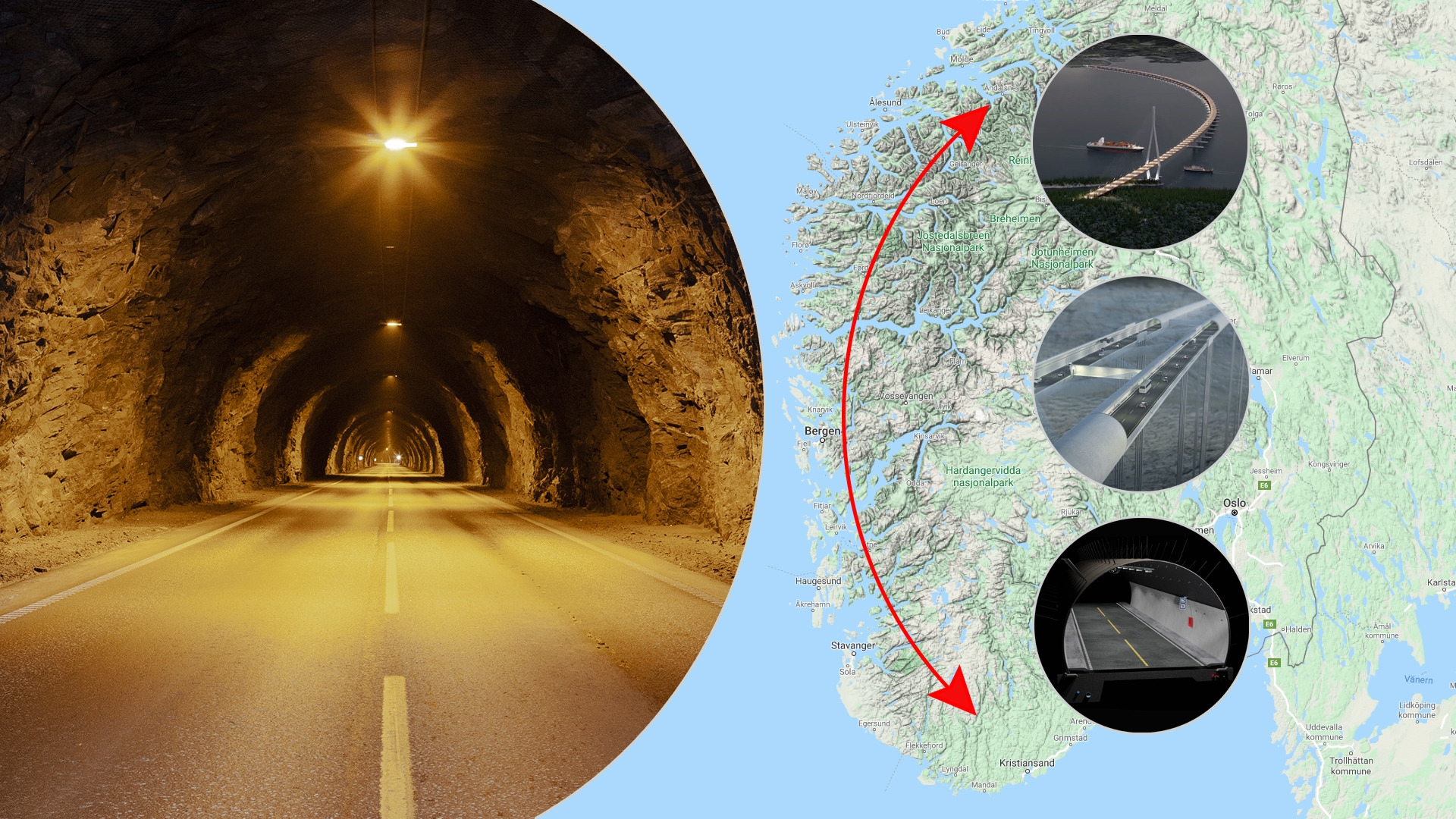Discussions on priority between large investments in Norway

The E39 Coastal Highway Route
The Norwegian Parliament's long-term goal is to develop the infrastructure between Kristiansand and Trondheim. A stretch of road that runs from Kristiansand in the south to Trondheim in the north, and is about 1100 km long.
The mega project, E39 Coastal Highway Route, goes through the cities of Stavanger, Bergen, Ålesund and Molde. The travel time is today about 21 hours, and the road users must use seven ferry connections. The goal of this enormous infrastructure investment is to create an improved and ferry-free connection, which will halve travel time and make the route closer to 50 kilometers shorter. Travel time cuts can be done by replacing ferries with regular connections or more frequent ferry departures - in addition to a number of stretches on land also being improved. This work includes many new major tunnel projects, but also the world's largest bridges and other structures.
The following fjord crossings are in the investment program: Rogfast, Bømlafjorden, Langenuen, Bjørnafjorden, Sognefjorden, Nordfjorden,
Vartdalsfjorden, Sulafjorden, Romsdalsfjorden, Julsundet and Halsfjorden.
The Rogfast and Bjørnafjord connection have been in the latest discussions. In 2017, the Bjørnafjorden crossing was estimated to NOK 35 billion. Currently the upper limit for the cost of the Rogfast project is approx. NOK 20 billion.
E39 Rogfast will be the world’s longest and deepest sub-sea road-tunnel. It will also be the deepest sub-sea road-tunnel in the world. When Rogfast is completed, the journey time between Stavanger and Bergen will be reduced by approximately 40 minutes. At the same time, it will facilitate an expansion in the housing and labor markets in the region, which will strengthen important business clusters.
The Bjørnafjord is demanding to cross as it is five kilometers wide with a depth of up to 600 meters. The study stretches back to 2009, when the Norwegian Public Roads Administration concluded that it is possible to cross the Bjørnafjord with a bridge. The Norwegian Public Roads Administration is working systematically with the scientific and research community to develop new bridge concepts and new technology.
In 2018, 80 km of the road network between Norway's second largest city Bergen and the capital Oslo, was named "Norway's worst road". With 41 fatalities, several hundred injured and constant landslide/avalanche danger, the jury and the public were in no doubt of the verdict.
A main target of the project is to build a safer and more reliable road and railway between Bergen and Voss.
In the start-up of the zoning plan for E16 and Vossebanen, the screening report was published for public consultation in 2018. The aim of the project is to finalise a proposal for a coherent state zoning plan for a new E16 and Vossebanen Arna–Stanghelle. The zoning plan shall be adopted autumn 2020.
The project is included in the National Transport Plan for 2018–2029. Construction is scheduled to start after 2024. The total cost for E16 and Vossebanen Arna–Stanghelle is estimated to NOK 25 Billion (road and rail).
The total distance between Bergen and Voss is 80 km and has approx. 30 old road tunnels. Many of the tunnels has a much lower safety level then seen in other tunnels that is upgraded according to the EU regulations for minimum safety level (EU Directive 2004/54/EC on minimum safety requirements for tunnels in the Trans-European Road Network).
Norway´s response to the EU regulations is to replace these tunnels rather than invest in too expencive upgrades on an old road network. Some upgrades have been carried out, but the road network is still very vulnerable and is waiting for a much needed investment.
The discussion
The debate now is whether to replace a very vulnerable road network, or delay a much needed safety investment and prioritize major investments along the coast that generate large socio-economic benefits and long-term profitability.
Photo and illustration: Arild P. Sovik, Illustrations: The Norwegain Public Roads Administration

 En
En 
